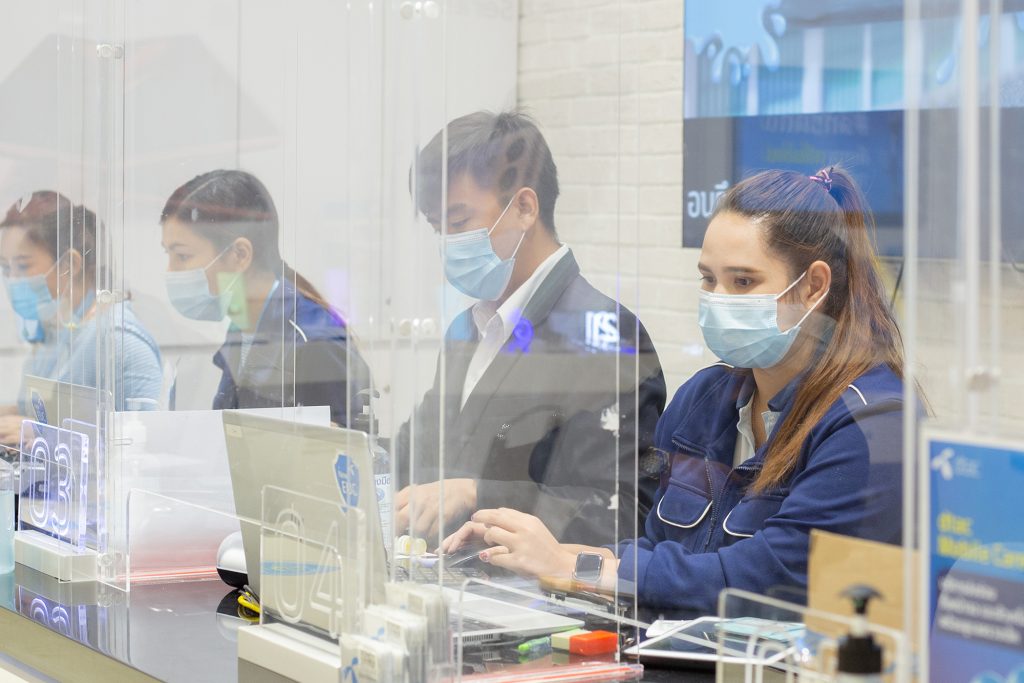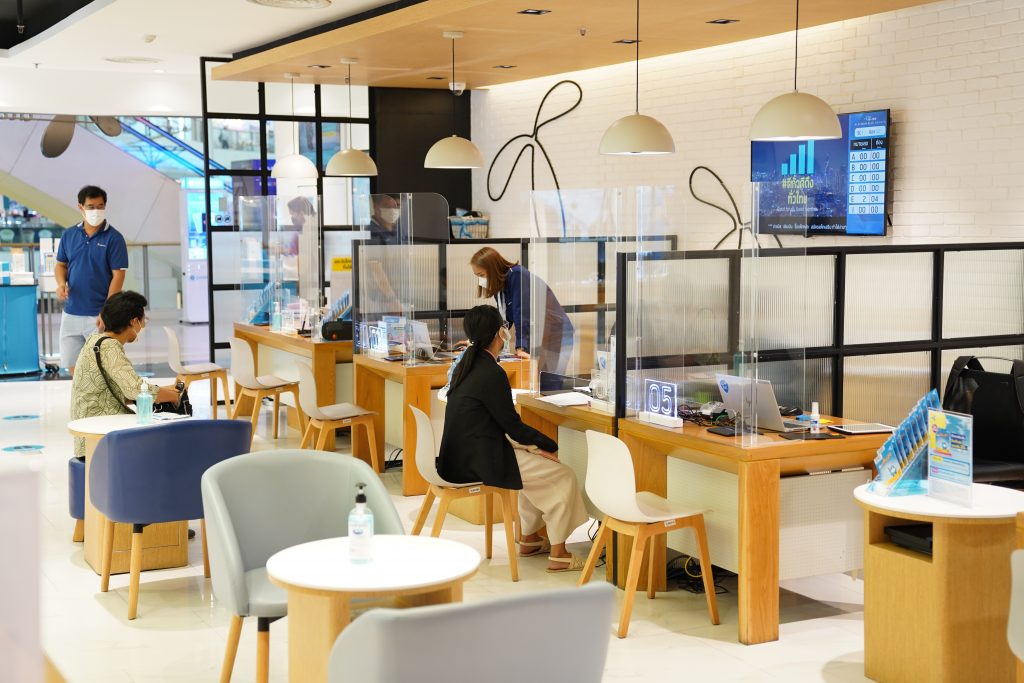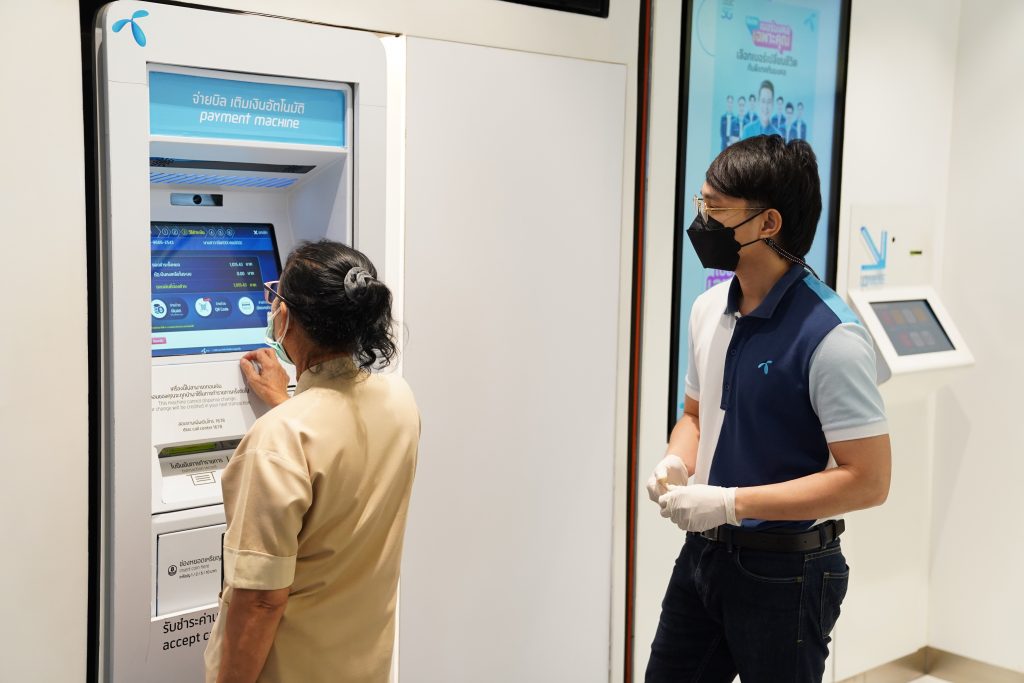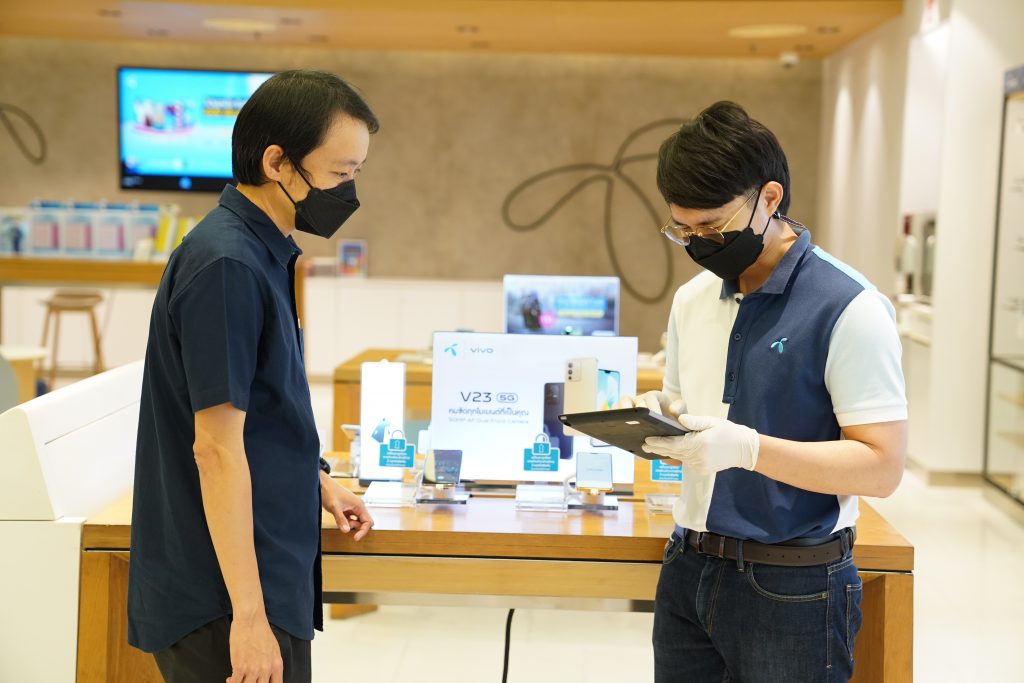Pushed by COVID-19, Thai consumers are embracing online shopping for much more than just electronics, fashion or beauty products. Be it a latte or a sofa, anything can now be delivered at one’s home in just a few taps. But where does that leave physical retail? To find out, dtacblog spoke to Raewat Tankittikorn, the head of dtac’s Channel Excellence division.
Mr. Raewat leads a team of experts reinventing the in-store experience for consumers. By using data-driven AI and automation, dtac is making shopping in real life as smooth, personalized and fast as buying from an app.
“Today, dtac shops are completely paperless. You can get a new SIM in minutes without filling out any forms or making any copies of your ID. It used to take 10 times more time and leave a paper trail that put customers’ identity at risk. And this is just the beginning, we’re continually improving the in-store experience by making it more digital,” he tells us.
At the very start of the pandemic, from January to June 2020, dtac recorded a fivefold increase in the redemption of online shopping privileges within the dtac app. Meanwhile, data usage in city centers dropped as office employees took to working from their homes and laborers headed upcountry. These behaviors could have been the perfect storm to wipe out physical retail. But Mr. Raewat says customers were surprisingly keen to return to dtac shops in between lockdowns.
“COVID-19 caused a major shift in customer behaviors. Some traditional customers are still shopping in malls, but the fastest growth is in digital channels and in local retail that is closer to where people live, outside of city centers. All of these raise the question of the role of shops in the future. My belief is that they will remain, but they will have to do more to be relevant and future-ready,” Mr. Raewat says.

Mr. Raewat’s role requires him not only to respond to such changes, but also to prepare dtac for what comes next. Having converted dtac shops to entirely paperless operations, his team is now launching over 100 robotic automation processes to serve customers more quickly. Their goal is to automate 100 percent of processes by 2023.

“This is not just automation for the sake of automating. Customers now expect a retail experience as smooth as what they experience when shopping on their smartphone. With automation, we can get closer to that expectation. For example, touch-free operations allow us to have a real-time view of our inventory, so customers can get products faster, whether it’s via delivery or in-store pickup,” Mr. Raewat says.
While today’s focus is on effective digital channels and fast service, Mr. Raewat is also preparing dtac for tomorrow. dtac is building a vast portfolio beyond core connectivity services—microloans, insurance, gaming and more. And he believes dtac’s shops are uniquely positioned to connect customers to services like these.


“As Thai consumers become increasingly digital, privacy and security are becoming a major concern for them—and for the businesses they buy from. Online, it’s hard to tell if someone is who they say they are. But mobile operators stand out in the digital space as we have verified the identity of our customers. dtac is now leveraging that to develop a secure digital ecosystem. From gaming to banks and insurance, the services we offer are rapidly expanding,” he explains.
To keep up with fast-changing customers, Mr. Raewat also stresses that teams must work in new ways: collaborating more closely across the entire organization, taking more risks, and acting more quickly. Employees are also encouraged to work remotely and self-manage their time.

“It takes a very special culture to be agile,” he says. “At dtac, we are completely focused on empowering our customers, and on enabling them to live their best life. We call it tight-loose-tight. We are very clear on our team’s goals and on measuring their impact, which is to improve our customers lives. But we are loose on how teams fulfill those goals. It’s up to them to find what’s best for the customer.”
Tomorrow, the supremacy of large shopping malls in city centers may make way to different suburban or even rural options complemented by home delivery. But with the vision and customer-focus of teams like Mr. Raewat’s, physical retail looks set for a bright future no matter what shape it takes.


